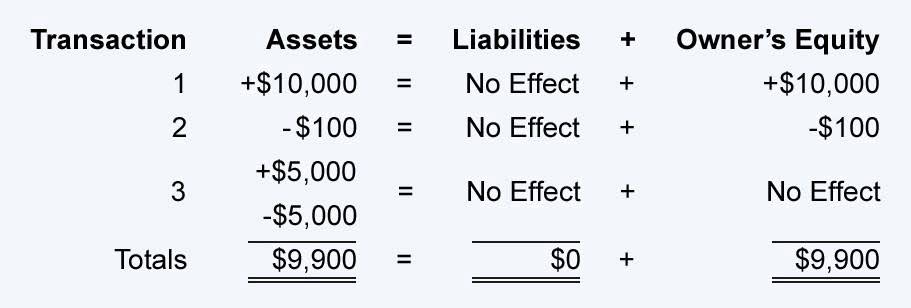
Excessive long-term debt may also impede a company’s growth by complicating efforts to secure additional loans or make external investments. Technology transforms the management of both accounts payable and notes payable by automating repetitive tasks, reducing human error, and improving overall cash flow management. With the right tools, businesses can enhance efficiency and gain better control over their financial obligations. Businesses take on notes payable to secure funding for large capital investments, refinance existing debt, or manage long-term growth. Because these obligations have structured repayment plans, they require careful financial planning to align with cash flow and profitability goals.
- Notes payable involve two straightforward processes – setting up expenses in the general ledger and making timely payments to note-holders.
- Stay tuned for up-to-date content designed to simplify procurement and keep you ahead of the curve.
- However, the current portion of notes payable (due within one year) is separated from the long-term portion.
- Because these obligations have structured repayment plans, they require careful financial planning to align with cash flow and profitability goals.
- Some sellers provided some discounts for the early payer within ten days and provided a 1% discount or the vendor’s wish.
Management
When a company purchases goods or services from a vendor and agrees to pay later rather than with immediate cash, that amount is recorded in accounts payable. These are typically short-term debts, with net terms (the time frame to settle the invoice) ranging from 30 to 60 days. Both notes payable and accounts payable involve money a business owes, but they serve different purposes. Accounts payable covers everyday expenses — short-term obligations to suppliers that can be efficiently managed with AP automation software to improve cash flow and reduce errors. Both accounts payable and notes payable are considered liabilities in contribution margin a company’s financial statements. They represent a company’s obligations to its suppliers, vendors, or creditors, which need to be settled through payments.
- This note becomes an asset on your balance sheet and signifies future income.
- It’s important to note that notes payable are not secured by any specific assets, making them unsecured loans.
- Repayment follows a structured schedule, often with monthly or quarterly installments.
- While dynamic discounting depends on supplier flexibility, it can be negotiated by discussing cash flow needs.
Treasury & Risk
A promissory note deal is one in which the borrower signs the note and unconditionally agrees to reimburse an individual, a vendor, or a financial institution that has lent money or obtained an asset. Accounts payable departments often handle the sourcing and management of vendors and suppliers, requiring collaboration with the procurement department for effective vendor relationship management. Team MHC consists of a multitude of roles, functions, and expertise within MHC. Working alongside field experts in various industries and company sizes, Team MHC has garnered impressive thought leadership real estate cash flow knowledge that we are excited to share with our readers. When you procure needed supplies using financing and ensure an effective budgetary process through P2P, you immediately see higher cash flow stability and lower costs. Leveraging financing can be an effective way of getting needed supplies and creating growth in the short term for companies that can generate revenue and adhere to repayment terms.
Interest = Principal Amount × Annual Interest Rate × Time period
It provides a more informal record of any outstanding purchases that need to be paid off. Accounts payable is also a liability account that is used to record any purchases on credit from the business suppliers. Notes payable and notes receivable represent two sides of the same transaction. A business may however have both notes payables and notes receivables – for moneys owed by them as well as money owed to them.
Financial Close & Reconciliation

By analyzing key financial metrics and overall debt strategy, businesses can determine whether their approaches to accounts vs. notes payable support growth or pose a risk. Every business has financial commitments — amounts it owes to suppliers, lenders, or other parties. Two common liabilities on the balance sheet are accounts payable and notes payable.

FAQs: Understanding Key Financial Terms

Payables should represent the exact amount of the total owed from all the invoices received. Nevertheless, notes payable may or may not be included as a part of the company’s working funds management. Notes payable are primarily generated and issued for debit notes payable vs accounts payable arrangements and are payable to economic institutions and credit companies.
- Companies incur rent as an accrued expense because this is a cost that’s paid consistently and monthly.
- Parent companies, individual owners or others could make a loan to a company that would result in a note payable.
- Technology transforms the management of both accounts payable and notes payable by automating repetitive tasks, reducing human error, and improving overall cash flow management.
- However, with notes payable, the amount is mainly used to finance the purchase of assets like property, plant and equipment.
- Notes payable vs. accounts payable are typically listed in separate categories on the balance sheet.

If the note is due after one year of the balance sheet date, it is classified as noncurrent or long-term. Chartered accountant Michael Brown is the founder and CEO of Double Entry Bookkeeping. He has worked as an accountant and consultant for more than 25 years and has built financial models for all types of industries.
